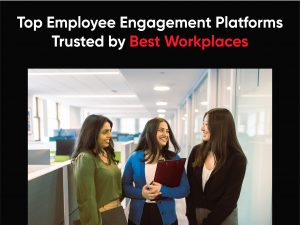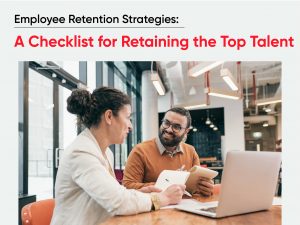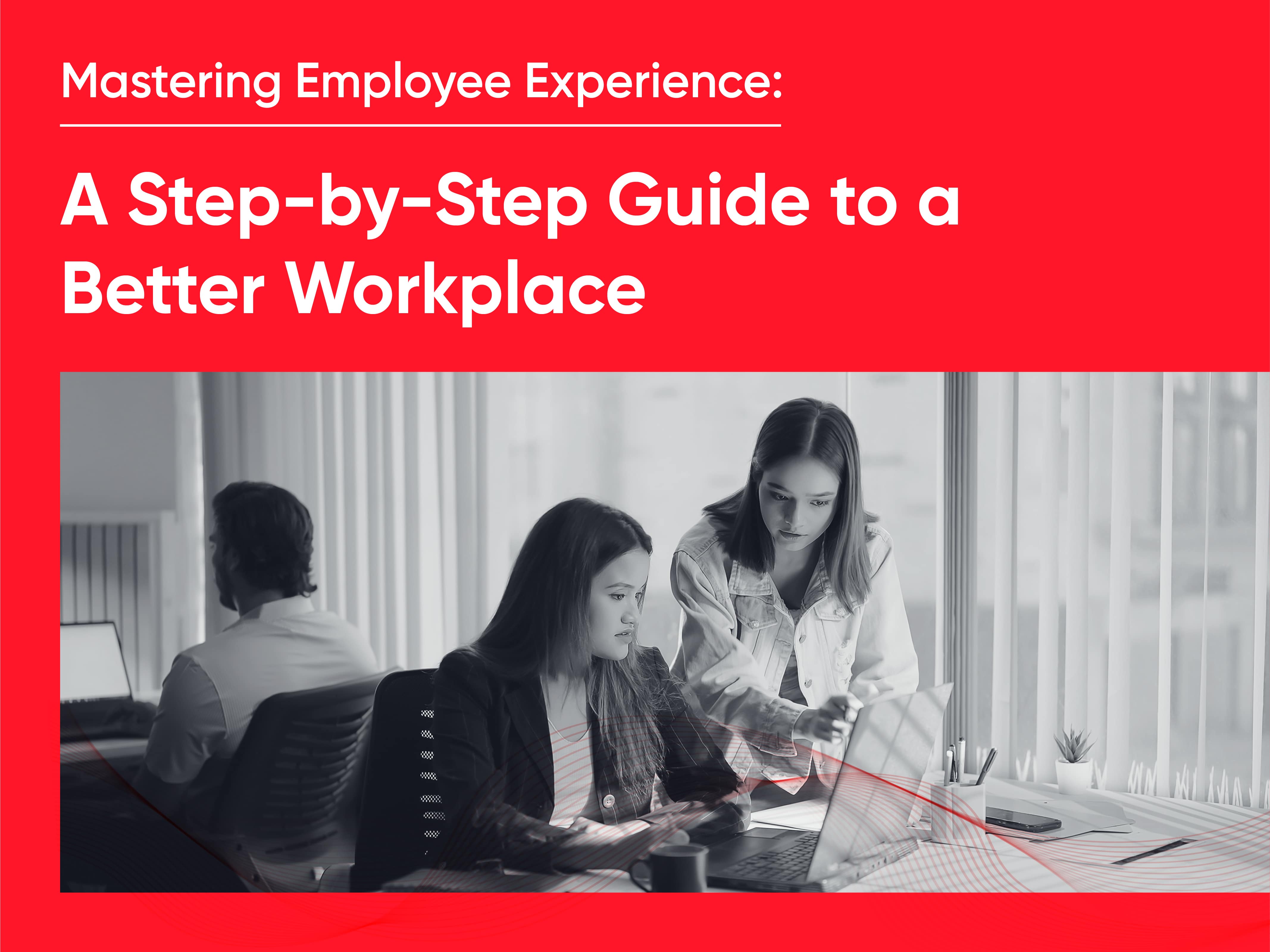Reading Time: 8 minutes
In the dynamic realm of digital marketing, the art of storytelling has transcended mere content creation, emerging as a powerful tool for brand authenticity and engagement. Among the myriad ways to tell a brand’s story, featuring narratives from your own employees on social media stands out as a genuine and impactful approach. In this article, we’ll delve into the why, the how, and the creative nuances of sharing employee stories, expanding upon each point to guide you through crafting compelling narratives that resonate with your audience.
Why Feature Employee Stories on Social Media?
As the digital landscape becomes increasingly saturated with content, consumers yearn for more than just a transactional relationship with a brand. They seek authenticity, transparency, and a connection that transcends the traditional buyer-seller dynamic. Employee stories provide a window into the human side of your organization, creating a relatable narrative that fosters trust and loyalty among your audience.
The impact of employee stories extends beyond immediate customer relations; it significantly contributes to building a robust employer brand. In an era where talent acquisition is fiercely competitive, potential hires are drawn not only to the job role but also to the company culture. Authentic employee stories act as a beacon, attracting top talent that resonates with the values and ethos of your organization.
According to our India’s Nation Builders 2023 report, a staggering 86% of employees take pride in sharing their affiliation with the organization. This statistic underscores the inherent value and positive sentiment that employees associate with being part of a workplace community.
Social Media Marketing vs. Traditional Marketing: A Paradigm Shift
To understand the significance of featuring employee stories on social media, it’s essential to contrast it with traditional marketing methods. Traditional marketing often operates on a one-way communication model, delivering messages to a passive audience. In stark contrast, social media marketing thrives on two-way communication, where engagement and interaction are pivotal.
By showcasing employee stories, you move beyond the transactional nature of traditional marketing. Social media becomes a platform for dynamic conversations, creating a community that engages with your brand on a personal level. It’s not merely about promoting a product or service; it’s about building relationships and fostering a sense of belonging within your audience.
Social Media Marketing vs. Traditional Marketing: A Paradigm Shift
To understand the significance of featuring employee stories on social media, it’s essential to contrast it with traditional marketing methods. Traditional marketing often operates on a one-way communication model, delivering messages to a passive audience. In stark contrast, social media marketing thrives on two-way communication, where engagement and interaction are pivotal.
By showcasing employee stories, you move beyond the transactional nature of traditional marketing. Social media becomes a platform for dynamic conversations, creating a community that engages with your brand on a personal level. It’s not merely about promoting a product or service; it’s about building relationships and fostering a sense of belonging within your audience.
Attracting Top Talent with Employee Stories
1. Create Interactive Content
Posting engaging questions alongside employee stories serves a dual purpose. Firstly, it encourages active participation, turning your audience from passive consumers into active contributors. Secondly, it allows your audience to share their own perspectives, fostering a sense of community and dialogue around your brand.
2. Encourage Team Reshares
The power of collective engagement should not be underestimated. Encouraging team members to reshare your company’s posts creates a ripple effect, enhancing social traction and extending your reach to a broader audience. This not only amplifies the impact of your employee stories but also cultivates a united front that showcases the strength of your organizational culture.
3. Respond and Keep the Conversation Alive
The importance of active engagement cannot be overstated. Responding promptly to comments and messages demonstrates that your organization values feedback and is committed to open communication. This level of interaction not only strengthens your relationship with existing customers but also provides a positive impression for potential employees.
Guidelines for Sharing Employee Stories
1. Obtain Consent
Respecting your employees’ privacy is paramount. Before sharing any employee story, it’s crucial to obtain informed consent. This involves not only seeking permission but also providing a clear understanding of how and where the story will be shared. This ensures that employees are comfortable with the level of exposure and transparency.
2. Respect Privacy and Be Authentic
Authenticity is the linchpin of successful storytelling. Audiences can discern when a story has been overly edited or manipulated, leading to a loss of trust. To overcome this challenge, it’s imperative to let your employees’ voices shine through. Avoid excessive editing, enabling the stories to resonate as genuine and relatable experiences.
3. Provide Support
Some employee stories may involve overcoming challenges or difficult experiences. In such cases, it is crucial to provide ongoing support and resources not only for the individuals involved but also for others within the organization who may be facing similar situations. This proactive approach reinforces the commitment to employee well-being and fosters a supportive workplace culture.
Success Metrics for Employee Stories on Social Media
1. Engagement Metrics
Likes, shares, comments, and reactions serve as tangible indicators of how well your audience is responding to employee stories. High engagement rates signify that your content is striking a chord with your audience, creating a positive impact.
2. Reach and Impressions
While engagement metrics focus on interactions, reach, and impressions, they shed light on the breadth of your audience. A higher reach indicates that your stories are resonating beyond your immediate followers, potentially reaching and influencing a wider pool of potential customers and employees.
3. Qualitative Feedback
Beyond quantitative metrics, qualitative feedback in the form of comments and messages offers invaluable insights into how your audience perceives your company stories. This qualitative data provides a nuanced understanding of the emotional resonance and impact of your storytelling efforts.
According to our India’s Great Mid-size Workplaces 2023 report, Leadership Excellence is identified as a key driver of organizational success. Cultivating a culture of continuous improvement, developing strong leaders, attracting top talent, delivering on promises, and demonstrating integrity collectively inspire confidence among employees. Further findings also highlight the importance of Personal Fulfilment. Empowering individuals to be appreciated, proud, authentic, and aligned with the organization’s goals leads to a positive and fulfilling work experience.
Analyzing Success Metrics and Overcoming Challenges
Analyzing social media metrics over time is essential for refining your storytelling strategy. By understanding which types of stories resonate most with your audience, you can tailor your content to maximize impact. A/B testing offers a valuable tool for comparing the performance of different types of posts, providing actionable insights for future campaigns.
While success metrics are critical, it’s crucial to view them as part of a larger employer branding strategy. The ultimate goal extends beyond high engagement or reach; it is to build a robust employer brand that attracts and retains top talent over the long term.
Challenges and Solutions
Sharing employee stories on social media presents its unique set of challenges. Privacy concerns, the risk of appearing overly promotional, and maintaining consistency are key hurdles to navigate.
1. Overcoming Privacy Concerns
Businesses should prioritize obtaining informed consent from employees before sharing their stories. Informed consent involves transparent communication about how and where the story will be shared, along with the right for the employee to review and approve the content before it’s posted. This proactive approach not only respects privacy but also empowers employees to have agency over their narratives.
2. Ensuring Authenticity
Authenticity is the heartbeat of impactful storytelling. To overcome the challenge of appearing overly promotional or edited, businesses should aim to share stories in the employees’ own words as much as possible. This approach lends an air of genuineness to the narratives, fostering a connection between the storyteller and the audience.
3. Consistency in Content Creation
Maintaining a consistent stream of employee stories can be challenging, particularly for smaller businesses. To overcome this hurdle, businesses can implement a structured content calendar.
This calendar can include themed months featuring different departments or roles each month to ensure a diverse range of stories. Encouraging employees to contribute their narratives also fosters a sense of collective storytelling, distributing the workload and maintaining a steady flow of content.
5 Creative Ways to Feature Employee Stories on Social Media
1. Employee Social Media Take-Overs
Empower your employees by handing over the reins of your social media accounts for a day. Whether through a “day in the life” on TikTok, an interactive Twitter chat, or an Instagram ‘Ask Me Anything,’ this approach humanizes your brand by letting employees speak for themselves.
2. Participate in Theme Days for Maximum Reach
Global theme days or themed weeks/months on social media are golden opportunities. They provide focused content topics and enable your brand to participate in a global conversation. Days like Employee Appreciation Day or World Mental Health Day are perfect occasions to align your employee stories with broader themes, showcasing how your workplace contributes positively to the world.
3. Think Beyond the Workplace
Great workplaces understand that employees have lives beyond the office. While acknowledging and praising employees for their hard work is essential, extending that acknowledgment to their activities outside of work adds a personal touch. Whether it’s volunteering, unique hobbies, or talents, showcasing the multifaceted nature of your employees reinforces the idea that your business prioritizes the individuality of its people.
4. Share Your Stats for Transparency
Numbers, when presented effectively, can be eye-catching on social media. Utilize visually appealing graphics such as graphs or infographics to showcase statistics that set your company apart. This could include metrics like the number of women in leadership positions, salary comparisons, or insights from employee pulse surveys. By presenting key numbers in a visually appealing format, you make data engaging and accessible to your audience.
5. Use Banners and Filters for Playful Posts
Filters and interactive elements aren’t reserved solely for personal use. Platforms like Instagram Stories and TikTok offer features such as filter games, which can be creatively adapted for your brand. Incorporate playful elements into your posts, such as filters that reveal interesting facts about your employees or banners that highlight achievements. This adds a fun and interactive dimension to your storytelling efforts.
Transformative Impact of Employee Stories
Crafting and sharing employee stories on social media is an art that, when executed effectively, can transform your brand into a magnet for top talent and engaged customers. By navigating challenges, staying authentic, and embracing creativity, your company can inspire and connect with a broader audience, creating a narrative that extends beyond products and services to the very heart of your organization – your people. In an era where relationships matter as much as transactions, the stories you tell become the threads that weave the fabric of a thriving, connected community.










